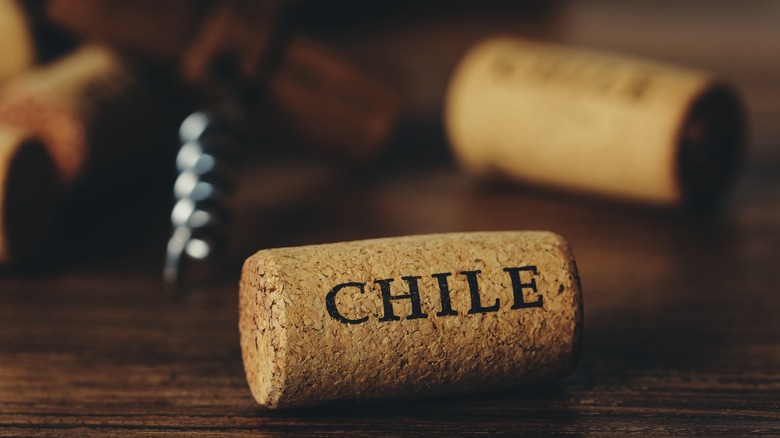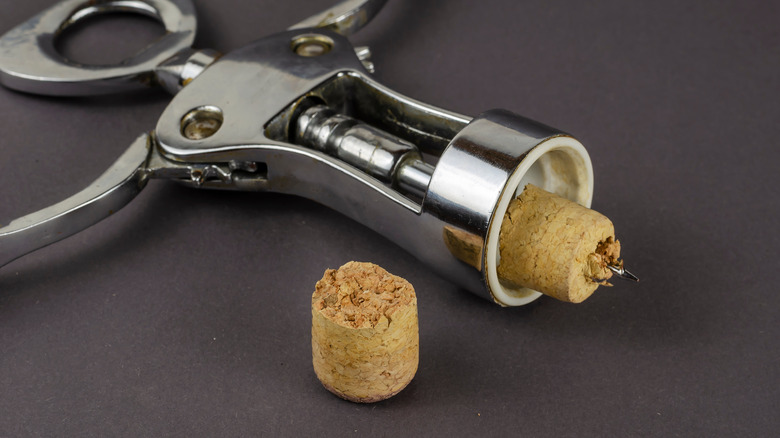The Unbelievably Easy Hack To Get Corks Back Into Wine Bottles
The internet is full of kitchen hacks. There are tips for cleaning your slow cooker, storing bananas for the perfect ripeness, and even ways to use your waffle iron to make cinnamon rolls. Everyone is looking for an easier way to get the job done.
If you're reading this, you have likely felt the frustration of trying to push a bloated cork back into a wine bottle. No matter how you squeeze and press, the enlarged cork won't budge. Natural corks are amazingly tough, and trying to cut them with a knife to make them fit may end with a trip to the emergency room.
Considering wineries use machines to force corks into bottles, it's no wonder you have a problem shoving that cork back into the bottle of white wine you needed for a recipe. However, using a common kitchen tool, there's an unbelievably easy hack to get corks back into wine bottles.
The cork hack
Bon Appetit recommends stopping up a bottle of wine after every glass is poured to preserve its freshness. Oxygen, heat, and light are wine's biggest enemies, and the longer a bottle of wine has been exposed to them, the more quickly the flavor will change. They recommend using plastic wrap and a rubber band to cover the opening and keep the wine from oxidizing but admit it's not the best solution.
A better solution requires only one tool you may already have in your kitchen—a rolling pin. According to Apartment Therapy, running a rolling pin over a cork to flatten it can reduce its size enough to fit it back into the bottle. Using a scrap of waxed paper on the end of the cork that's inserted into the bottle can help it slide in (per Choice Wineries).
This technique only works with natural corks, but synthetic corks usually slide back into the bottle with little effort—no hack needed—and you may not have any luck trying the rolling pin method on a champagne cork due to its large and unusual size.
How long will wine last?
Wine Spectator recommends refrigerating all wine after it's been opened, including wines recommended to be served at room temperature. They advise putting leftover wine into smaller bottles before refrigerating it to reduce the amount of oxygen it is exposed to.
The length of time a wine will last depends upon many factors, not just how it's stored. Wine with more residual sugar will last longer than its dry counterparts, younger wines last longer than vintage ones, and many sparkling wines can still be consumed but may lose their fizz. Three to five days is a good rule of thumb for wines that have been properly stored.
There are other ways of preserving a bottle of wine in case your cork is missing or has crumbled or if you don't own a rolling pin. Food & Wine has a list of bottle stoppers they recommend ranging in price from $8 to $229. Or, you can always just buy wine with a screw top.


